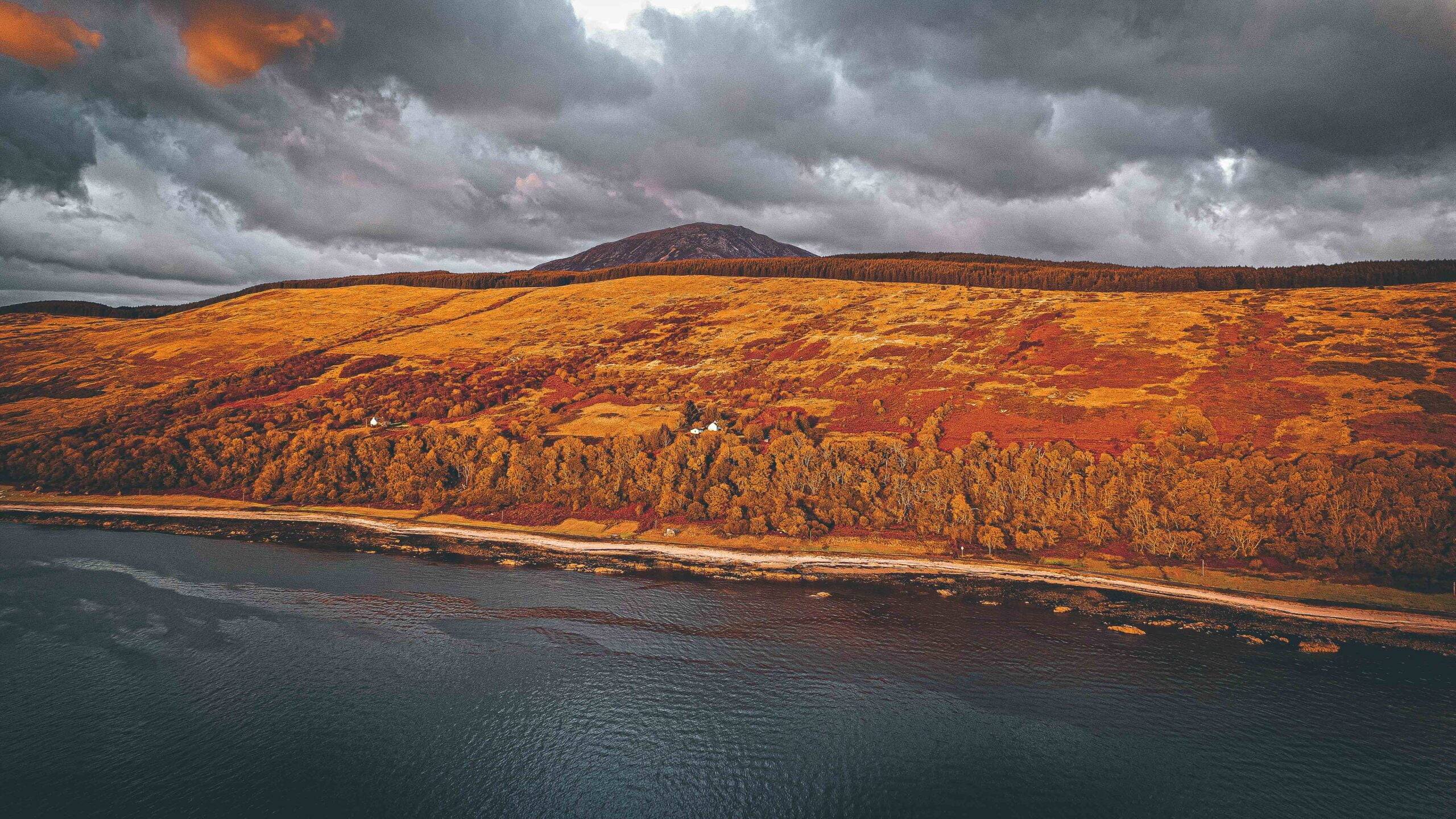There are getaways and there are hideaways. And it was on Arran, an isle separated by the Firth of Clyde that I had chosen to come, to avoid the hassle of Covid, the endless paperwork and all those wretched travel passes.
So I took the ferry from Ardrossan to Arran’s Brodick Bay and then drove beyond a heathered wind-swept mountain graced with roaming deer.
All that I knew was that I was in for a surprise. Sure enough, a stunning diorama emerged, jigsaw piece by jigsaw piece, assisted by the ever-changing light of the isle’s west coast.
I felt like one of the seagulls as I gazed across the stretch that is Kilbrannan Sound to Kintyre.
At last, down a farm track, I had come to Arran Farmhouse (www.arranfarmhouse.com) to be greeted by a small discreet stone signifying ‘Banlicken’ from the ancient Gaelic name ‘Bàn Leacainn’ meaning ‘white hill slope’.
Tucked into this heathered slope were the white-washed walls of my place to stay. Home from home at last. It had clearly been lovingly restored. For once it was part of an ancient ‘clachan’ (farming community) but now it was a cosy, self-catered, contemporary and comfortable traditional Scottish croft.
As many as 12 could have slept in its 4 bedrooms. I felt immediately rid of all my petty quotidian problems as I became immersed in the sheer glory that is wilderness.
I found the interior slick, chic and homely. It had a stylishly modern feel within its original framework. In this beautiful spacious farmhouse, I loved being able just to sit around the big kitchen table to look straight out to the sea as well as to switch off in the sitting room.
At last, I could indulge in my dangerously chunky book beside a cosy reassuring fire interrupted only by a healthy reminder of my true setting by the tasteful, coloured images of seabirds and pictures of local, littoral craggy scenes. Everything here had been thoroughly thought through!
Scottish weather is of course renowned for its fleeting inconstancy. I made the most of the sun to walk down to the shore, scrunching my feet like a schoolboy in the grittiest of stony beaches.
All the joys of my ‘Swallows and Amazons’ childhood sprang to mind: my bucket and spade holidays, the crab nets and butterfly nets and later the endless pursuit of my parents along the hidden trails of overgrowth and pathways. For here I lost myself too in the mystery of streams and the lure of the sea.
Arran was once part of the Norwegian crown before it became absorbed into Scotland in the 13th century. It’s an island with endless coastal pathways, hills and mountains. There are forested areas, rivers, small lochs and beaches. The profile of her northern hills, seen from the Ayrshire coast is called “Sleeping Warrior”, from its resemblance to a resting human figure.
Another day, I walked through scenic Glen Rosa and climbed up the craggy peaks of Goatfell which rises behind the bay, as I classically chewed a reed to sit and ponder. For Goatfell is an open, rugged, upland landscape that was formed during the last ice age granting it dramatic scenery. In local parlance (and something about which I discovered in the local pub it matters to be accurate) it’s called a ‘Corbett’ (being over 2500 feet – a ‘Munro’ being more) while hills are called ‘Marilyn’ and small rocky islands ‘skerries’. It was demanding and bracing but of course worth it!
I picked up a local book to discover this translation from ‘Agalllamh na Senorach’, an ancient Irish poem:
Arran of the many stags
The sea strikes against her shoulders,
Companies of men can feed there,
Blue spears are reddened among her boulders.
Merry hinds are on her hills,
Juicy berries are there for food,
Refreshing water in her streams,
Nuts in plenty in the wood.
Often referred to as ‘Scotland in Miniature’, on Arran I found a little bit of everything: towering granite peaks, sandy bays and even palm trees growing in this mild oceanic climate created by the Atlantic Ocean and the Gulf Stream.
The wildlife was outstanding: there were shy deer, massive pheasants and large eagles swooping down from the mountains. I spotted sea otters and colonies of seals near the coastal caves but not the basking shark, porpoises or minke whale known to be there.
I must go back: whenever but soon!










